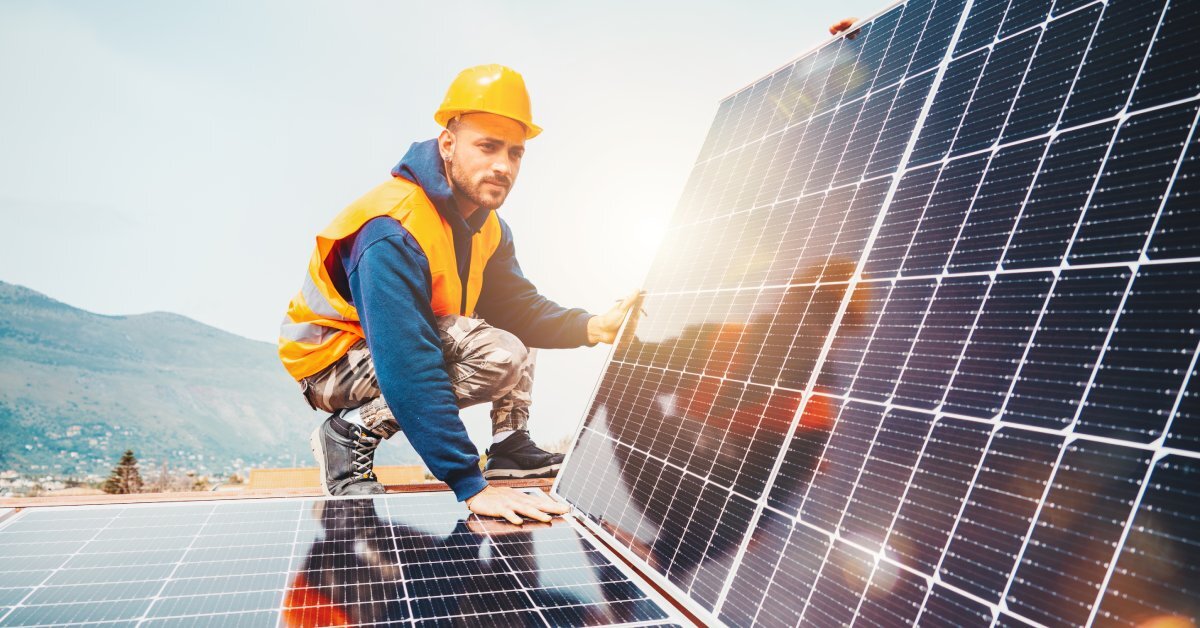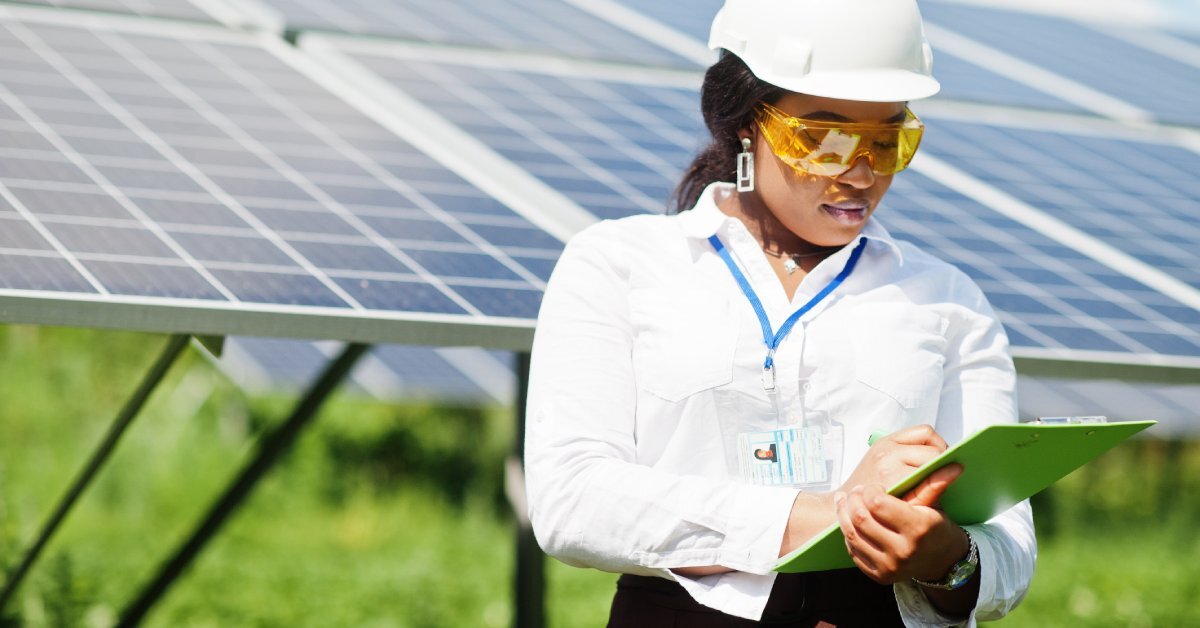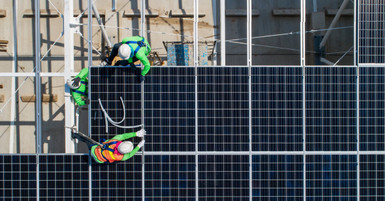Feb 3rd 2025
Comparing Solar Costs With Traditional Energy Sources
Many commercial businesses are switching to solar to reduce energy costs and practice sustainability in the workplace. While many people swear by the benefits of solar, how do the costs compare with traditional energy sources? Read on to discover the trends and expenses it costs to operate solar grids for commercial buildings.
Exploring the Benefits and Downsides of Traditional Energy Costs
Traditional energy sources like coal, natural gas, and oil are the backbone of most businesses’ power supply. Many businesses continue to use these traditional energy sources because of their accessibility and reliability.
A new business can easily start receiving power from utility companies using these sources. This convenient installation allows businesses to open up to the public faster.
Drawbacks of Using Traditional Energy
There are drawbacks to relying solely on traditional energy. Energy prices are subject to market fluctuations influenced by geopolitical conditions, demand, or scarcity of natural resources. For example, businesses in regions with extreme weather conditions may face higher rates during peak usage seasons.
Additionally, using traditional energy contributes to carbon emissions, which creates environmental concerns for the future. Because of these disadvantages, many people look toward solar energy as an accompaniment or a replacement for their main energy source. This way, they can save money on monthly expenses and promote a sustainable work environment.
Initial Installation Costs Comparison

With traditional energy sources, there’s often a negligible installation fee for connecting to the power grid. Newly constructed buildings, however, may need additional fees for manual labor and connection materials. Solar panels, on the other hand, require additional equipment to set up a personalized energy grid for your business.
Shifting to Solar Energy Grids
When considering the transition to solar energy, many business owners hesitate to make the switch due to the initial installation cost. Solar energy installation requires purchasing solar panels, inverters, and other essential components. Commercial properties must account for additional costs such as professional installation, permits, and electrical work to connect to the existing grid.
For your own business, assess your priorities and what your budget will allow before you make a final decision. Once you complete this initial investment, you’ll have your own energy source catered to your business needs.
Additional Solar Equipment Needed for Efficiency
Along with the base equipment with your solar grid, you can expect additional costs for extra features that improve your system. To maintain steady energy output, solar energy systems often need batteries to store excess energy generated during peak sunlight hours. Investing in high-quality batteries helps businesses access power during cloudy days or nighttime for uninterrupted operation.
Another helpful accessory includes monitoring software. Monitoring software allows businesses to track energy production and consumption in real time. This will highlight inefficiencies and pinpoint performance issues to reduce unexpected or severe maintenance.
Any additional equipment included in your initial investment could raise the cost of your solar installation. With these reliable materials, you can find a decrease in maintenance and an increase in longevity and performance. Customize your installation and include what you’ll need for your business.
Long-Term Monthly Usage Costs

Traditional and solar energy differ in their monthly rates as energy providers measure them differently. Discovering the difference between these expenses will help you visualize the weight of their costs in the long term.
The Cost of Traditional Energy
Traditional energy uses tiered rates to charge businesses based on consumption and utility rates. Throughout the year, your business may need additional energy output for machinery, HVAC units, or other energy-powered systems. This could hinder companies that may receive a charge for higher output when they weren’t expecting it.
The Financial Advantages of Solar Energy
Solar energy, on the other hand, provides an opportunity to stabilize monthly usage costs. Once you pay off the solar system installation, you significantly reduce or eliminate energy costs. This will help you allocate the expenses toward funding other areas of your business.
Also, many businesses even benefit from net metering policies. This process allows them to sell surplus energy back to the grid and offset monthly costs further. The savings you receive from the monthly costs will provide economic advantages for your business in the long term.
Comparing Maintenance Costs for Both Systems
Regular maintenance will improve the quality of energy output from your systems. To compare the maintenance costs of both solar and traditional energy sources, consider the repairs and replacements necessary for the systems.
Maintenance Costs of Solar Grids
Solar panels generally require minimal maintenance, with their strong resistance to harsh weather conditions. Occasional cleaning to remove debris or dirt and annual checks from professionals are sufficient to keep the system running optimally. This makes it easier to monitor expenses that derive from maintenance costs.
The Hidden Repair Expenses of Traditional Energy Sources
Alternatively, traditional energy source maintenance refers to the repairs and support conducted by utility providers. While they don’t typically schedule in-house maintenance for the system, they may raise the rates for businesses to manage equipment upgrades, infrastructure repairs, or natural disaster-related issues. This can make it difficult to manage your monthly expenses for your system.
Unlike solar systems, where businesses retain system ownership and maintenance responsibility, traditional energy costs are ongoing throughout the business’s operation. If you would rather manage your maintenance costs directly, a solar installation may be a worthy investment for your business.
Evaluating the ROI of Solar Energy
Ultimately, the return on investment (ROI) showcases the underlining cost comparison of solar and traditional energy sources. These statistics show the cost timeline from both energy sources to determine which one will save cost and time for your business.
Solar System Savings Over Time
Solar systems typically have an average payback period of seven to 10 years. After this period, businesses essentially gain free electricity for the remaining lifespan of the system. This can range from 20 to 30 years before you need to replace old parts.
The Long-Term Effects of Traditional Energy Costs
Traditional energy costs, in contrast, continue indefinitely without much return on expenditure. For businesses, this may seem like a loss of profit as your performance becomes stagnant without much room for advancement. While this steady cost may work for some businesses, other companies want to see value and growth in their expenses.
Is it worth it to make the switch? If you’re not afraid of the initial cost, your business could thrive from this cost-effective and sustainable switch. Solar energy continues to support businesses as they take steps toward technological advancement, so take advantage of these benefits!
Protect your solar grid from costly repairs by installing solar accessories that benefit your system’s performance. Durable solar system placards, for example, are a great way to label hazardous parts of your system as well as define typical performance input and output.

